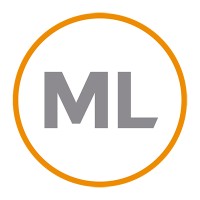
STRIKE THE RIGHT BALANCE BETWEEN AI AND HUMAN EFFORTS
Released On 10th Jul 2024
We can all agree that with the advancements in Artificial Intelligence (AI) – whether we want it to or not – traditional business practices are rapidly evolving.
AI is providing solutions to transform processes and conduct the repetitive tasks that would usually take a fair bit of time out of our daily routine without its assistance.
It’s introducing us to new ways to interact with clients and how we communicate with our teams.
We’ve all heard the fears about “the machines taking over”, and people talking about how AI will eventually take over jobs. However, these fears underestimate the value of human effort.
After all, it’s often the authentic human approach that enhances relationships between firms and clients. No matter how far technology evolves, it will likely always need that human touch.
AI can only learn from the data it is given, while employees can understand social responsibility.
So, while the technology performs its tasks such as data analysis, accountants will need to ensure that the AI systems adhere to regulations and protect confidentiality – we don’t want any accidental breaches of GDPR policies.
It’s all about finding the right balance between digital advancements and the human efforts we put in. In time, accountants who use AI to help them will outperform the ones that don’t.
Is your firm ready to introduce AI?
The first thing you’ll need to do is decide what objectives you have for your firm and then look at ways implementing AI tools could help you achieve them.
You’ll need to research which tools align with your objectives and analyse their effectiveness to make sure they will be a good addition rather than a hindrance.
For example, if you are looking to improve your client services, you can utilise AI-driven chatbots to provide 24/7 client support that answers common queries and schedules appointments.
Or if you’re looking to protect your firm from fraud, you can implement AI fraud detection systems that monitor transactions in real time, identify suspicious activities, and alert you to potential fraud.
Identifying these objectives will not only help you determine where AI is necessary and where it isn’t, but it will also provide insight into measuring the success of new systems.
You’ll need to ensure your business’s infrastructure is capable enough to support the AI tools you require. If they’re not, then you’ll need to look at purchasing new equipment which adds additional financial considerations.
Inefficient use of AI tools can lead to increased operational costs, as employees may need more time to complete tasks. Likewise, without a proper understanding of how to navigate the technology and its data, employees could expose your firm to costly security risks, potentially bringing operations to a standstill.
So, you’ll want to ensure all employees are at least trained in the basics of AI unless you want to waste time, money and resources.
It’s important to remember that implementing AI isn’t a one-and-done kind of process. It will need to be continuously monitored to evaluate its performance and optimised when necessary.
For more information about how you can utilise digital advancements to enhance your firm, please contact our team.






